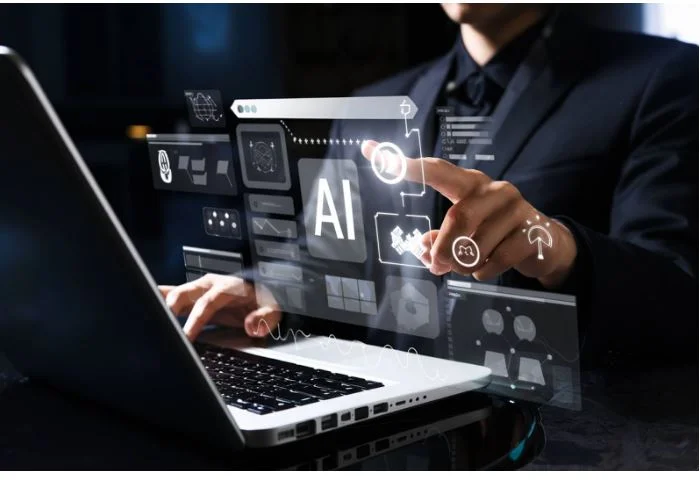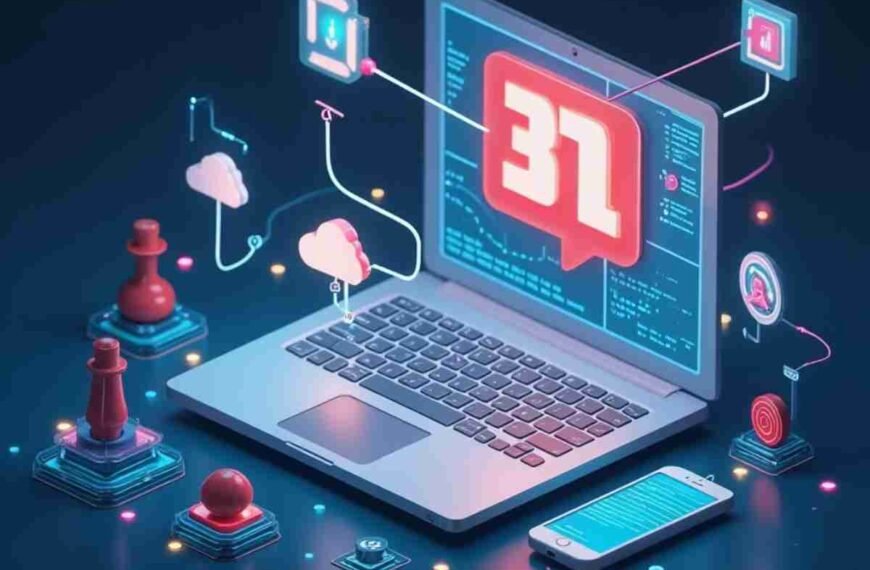Web design is no longer just about making things look good. It’s now about making things work smarter. Artificial Intelligence (AI) is pushing web design into a new era, where user experience, performance, and personalization are driven by data and machine learning. The pairing of AI and web design is a natural evolution—combining human creativity with machine precision to shape faster, smarter, and more intuitive digital experiences.
Design That Learns and Adapts
Traditional websites are static. Once they’re launched, they rarely change unless a human updates them. AI changes that. AI-driven websites can learn from user behavior in real time. They track how visitors interact with different elements, which buttons they click, how long they stay on pages, and more. From this, AI makes intelligent decisions—like changing layouts, adjusting color contrasts, or even modifying entire sections—to boost user engagement and retention.
Automation Without Compromise
Designing websites used to require hours of manual labor—coding, layout tweaking, cross-browser testing. AI cuts that down drastically without sacrificing quality. Smart design assistants can now automate repetitive tasks like image cropping, font pairing, and responsive scaling. This means faster project timelines, lower costs, and more room for creativity where it matters. Tools like Webdash leverage AI to streamline design processes and keep workflows efficient without compromising polish.
Hyper-Personalized User Experiences
Generic websites are becoming obsolete. Users expect interfaces that understand them. AI brings deep personalization into play by analyzing data like location, browsing history, and device type. With that, it can generate dynamic content tailored to individual users—custom CTAs, product suggestions, and even chatbot responses. This level of personalization increases engagement and conversion rates while making users feel like the site was built just for them.
Smarter UI/UX Decisions
User Interface (UI) and User Experience (UX) design decisions often rely on experience and intuition. AI adds science to the art. By running A/B tests at scale and analyzing user patterns, AI tools can identify which design choices lead to better results. Designers now have access to concrete evidence, not just gut feeling, when choosing colors, layouts, or navigation structures. It’s design with confidence, not guesswork.
Accessibility Gets an Upgrade
Accessibility isn’t optional—it’s essential. AI helps web designers meet accessibility standards more efficiently. It can auto-generate alt text for images, adjust contrast ratios, and even provide real-time voice navigation for users with disabilities. These features aren’t just add-ons—they’re core parts of a site’s function and inclusivity. AI ensures that accessibility is baked into the design process from the start, not tacked on at the end.
Real-Time Feedback Loops
One of AI’s most powerful features in web design is real-time feedback. AI doesn’t just wait for analytics reports—it watches every interaction as it happens. When a user stumbles or bounces from a page, the system notices. It can flag weak points, test alternatives, and adapt quickly. This creates a living feedback loop where the design is constantly improving, learning, and evolving with its audience.
Creative Support, Not Creative Replacement
Some fear AI might replace designers. That’s not happening. What AI does is enhance creativity. By handling technical chores and offering intelligent suggestions, AI frees up human designers to focus on strategy, storytelling, and innovation. Think of it as a powerful assistant—like Webdash—that works in the background so designers can keep their eyes on the big picture.
Data-Driven Storytelling
Good design tells a story. Great design backs it up with data. AI helps web designers gather insights that shape narratives. For example, analyzing user flow through a website can reveal what parts of a story captivate users most. With that, designers can emphasize what matters, trim what doesn’t, and craft a user journey that’s both beautiful and effective.
Future-Proofing the Web
Web design trends shift fast. What’s cutting-edge today is outdated tomorrow. AI offers a way to stay ahead. Machine learning algorithms can predict shifts in user behavior and design expectations based on ongoing data analysis. This helps brands and designers adapt in real-time rather than catching up later. AI makes it possible to build websites that don’t just follow trends—they anticipate them.
The Role of AI in Webdash-Driven Workflows
Webdash is one example of how AI integrates smoothly into everyday design workflows. With features like smart asset management, automated layout suggestions, and predictive performance tracking, Webdash turns design into a streamlined, data-backed process. It’s not just about getting a website live—it’s about launching a site that grows, learns, and evolves alongside the business and its users.
Collaboration Between Humans and Machines
The best results come from collaboration—not just among human teams, but between humans and machines. AI doesn’t have creativity, context, or culture. Humans do. But humans don’t have the processing power or pattern recognition that AI brings to the table. Together, they make a powerhouse duo. Designers bring the vision. AI brings the execution and optimization. It’s a partnership, not a replacement.
Ethics and Responsibility in AI Design
With power comes responsibility. AI in web design raises ethical questions—data privacy, algorithmic bias, and user manipulation. Designers must be thoughtful in how they implement AI. Transparency, consent, and inclusivity should be guiding principles. AI should enhance the user experience, not exploit it. As we push the boundaries of intelligent design, ethics must remain at the center of the process.
Conclusion: Designing the Future, Together
AI and web design are shaping the future of the internet. This partnership isn’t just about efficiency—it’s about creating more thoughtful, accessible, and dynamic experiences for users everywhere. By combining the intuition and vision of human designers with the analytical strength of AI, tools like Webdash help usher in a smarter, faster, and more responsive web. The future isn’t coming. It’s already here—and it’s beautifully designed.
















